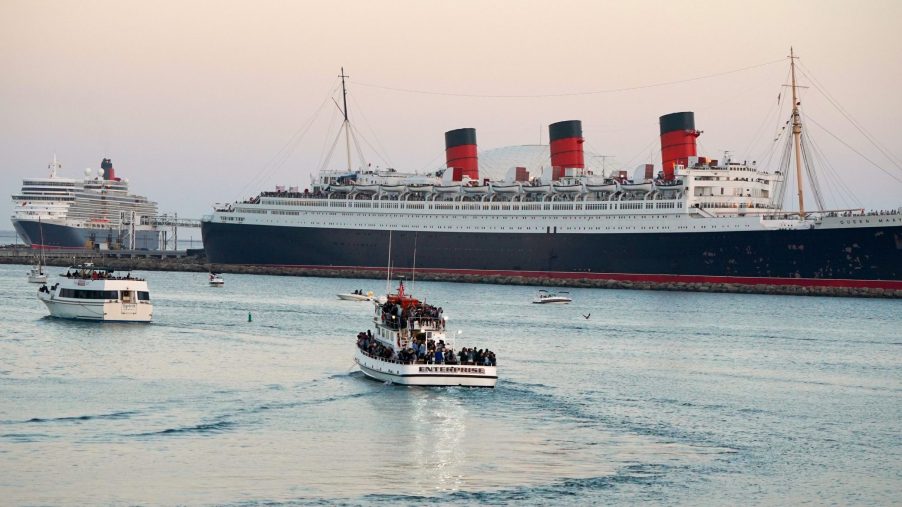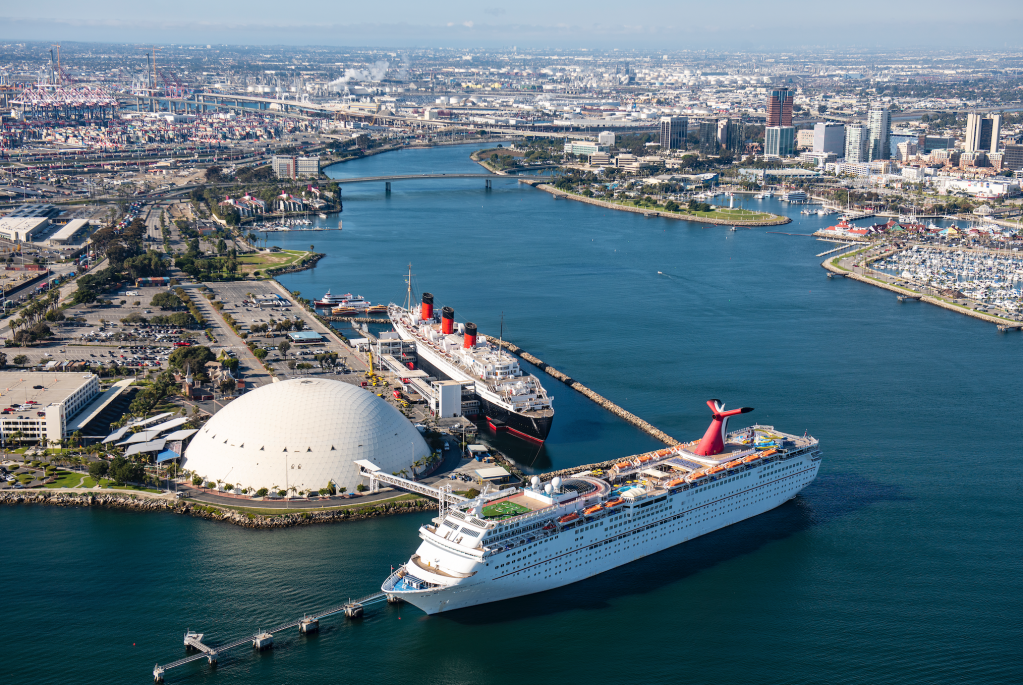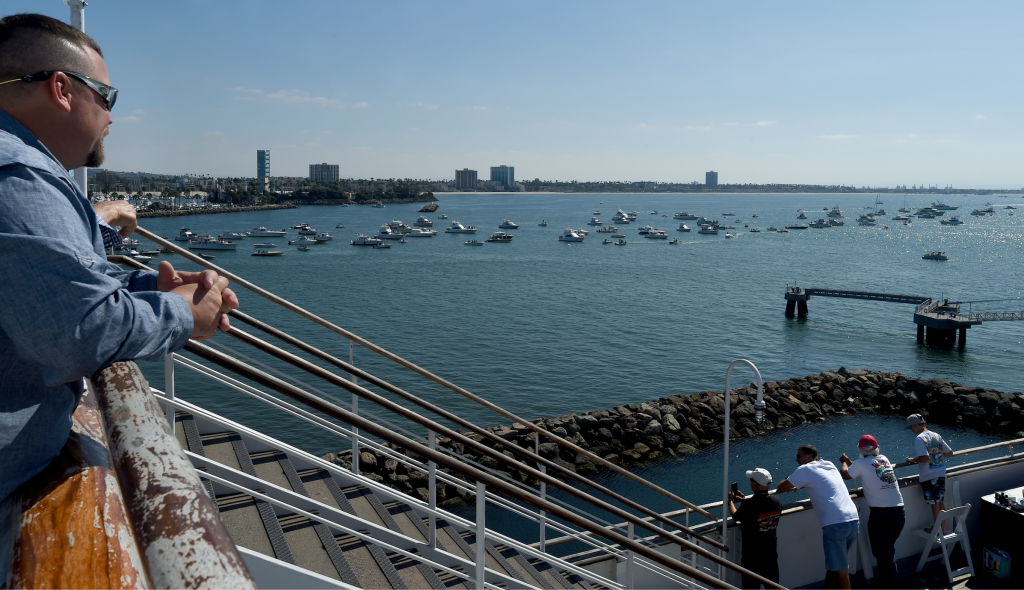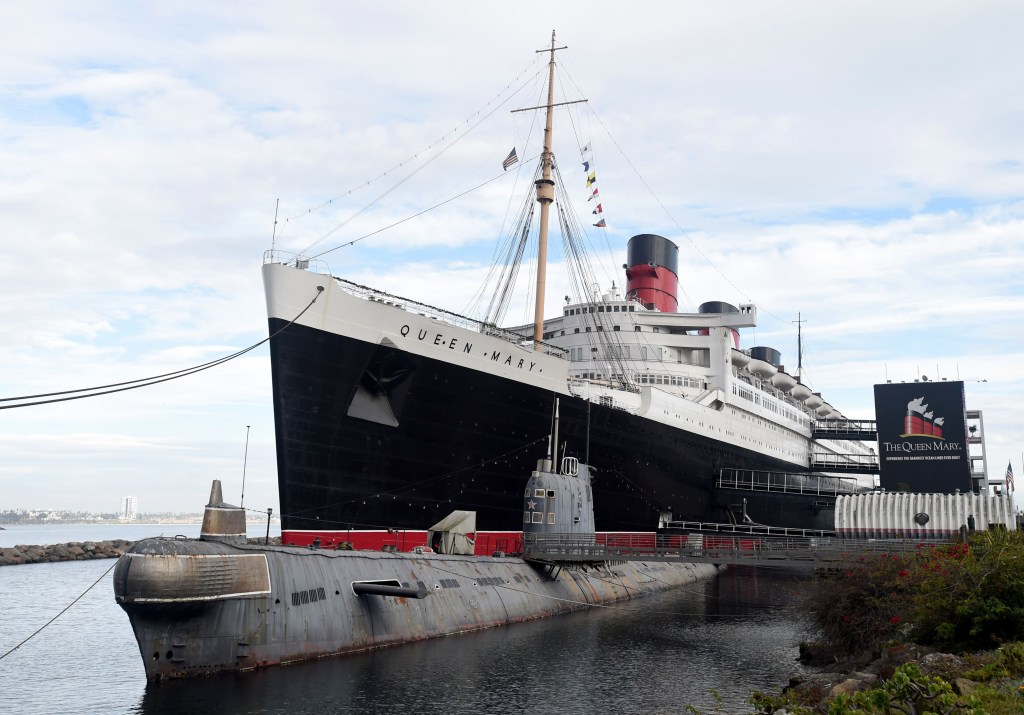
Things Look Dire For the Queen Mary Attraction: Cheapest Option is Sink It
The City of Long Beach is facing some major cash expenditures in the hundreds of millions of dollars over what to do with the Queen Mary attraction. From refurbishing it to patching it up or just sinking it, the costs are simply astronomical. Some believe it best to scrap or sink it, while others want the luxury liner preserved because it is the only ship that exists from the golden age of ocean liners.
The three options that confront the Queen Mary

We covered the city getting control away from the bankrupt leaseholder earlier. Now it has paid for a marine engineering firm to assess what the ship needs and how much it will cost. The Moffatt & Nichol firm has given the city three options.
It says repairs will last 25 years at a cost of $150 million to $175 million. To preserve it for at least 100 years means drydock costing $200 million to $500 million. Scraping or sinking the ship is the third option. That will cost between $105 million and $190 million.
Repairing the Queen Mary could end up like the USS Texas

Anything left in the ocean needs costly upkeep that the Queen Mary has not seen in years. It has taken a toll that has become critical. You may remember the museum ship USS Texas? It was massively overhauled yet 30 years later almost sank when a hole in the hull developed.
That is what the Queen Mary is facing so something needs to happen quickly. Yanking it out of the water into drydock would be the best way to preserve it. But at a projected $500 million it is the costliest. And most projected costs tend to inflate, so could drydock and repair hit $1 billion? It’s possible.
Many have wondered if turning it into a casino would generate more income, but it is a moot point. California only allows gambling on Indian reservations. Changing the law has come up many times before only to fail.
Why does it cost so much to sink or scrap a ship?

A costly repair while keeping it in the drink means continually spending millions of dollars in perpetuity to keep it there. And that won’t necessarily keep it from needing more money spent to keep chemistry from eating it alive. Then there’s the cost to sink it.
One would think that sinking a ship would not cost much. They would be wrong. The channel it is in isn’t deep enough to get it out to sea. Then, everything that would contaminate the ocean needs to be hauled out of it first. Plus there are other obstacles too numerous to either scrap or sink it that drive up costs. And, again, the cost projections might be on the low side.
Yearly, Long Beach gets roughly $3.3 million in tax revenue from hotel costs and events. That hardly covers the assessment for what to do with it. So the tradeoff just doesn’t make a lot of sense. Then there is the saga of the Russian sub docked next to the Queen Mary.
What to do with the Russian submarine docked next to the Queen?
The convoluted ownership and maintenance breakdown of the tourist submarine Scorpion is crazy. It opened for tours in the mid-1990s, but it was closed in 2015. Since then it has become infested with raccoons and rust. The 2,000-ton sub awaits its fate, which has also become the city’s problem. Look for it to be quietly sunk in the near future at great expense.
The city now awaits the results of the damage report currently being assembled. That should be done by the end of summer. The Queen Mary remains closed until at least 2022. Or maybe forever.



